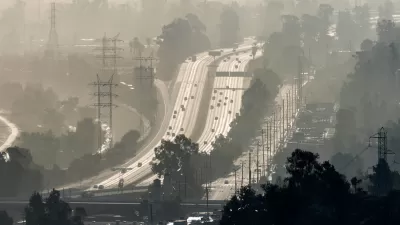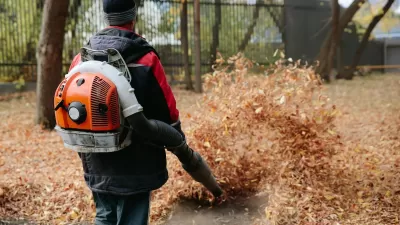Poor air quality has decimated the health of residents in this predominantly black community ringed by highways.

At the Huffington Post, Julia Craven has a deeply reported piece on air quality in one of Orlando’s poorest, most isolated neighborhoods.
“The pollution in Griffin Park [housing project] and its low-income Parramore neighborhood is violence of a kind Americans tend to ignore. But it is as deliberate and as politically determined as any more recognizable act of racial violence. What happened to Griffin Park was the sum of a series of choices made over the course of a century, the effect of which was to transmute formal segregation into the very air certain people breathe.”
The link between neighborhood air quality and neighborhood health is well established, as is the link between highway proximity and discriminatory planning.
“Although air pollution has generally decreased in the United States since the passage of the Clean Air Act of 1970, it still causes 200,000 early deaths each year. Men, poor people and African-Americans are disproportionately at risk. According to a comprehensive Harvard University study last year of air pollution in the U.S., black people are about three times more likely to die from exposure to airborne pollutants than others.”
Federal air quality standards could make an impact, but under the current president, that’s unlikely. The Trump Administration has reduced the budget of the Environmental Protection Agency by one-third, failed to update air quality maps and rolled back regulations intended to reduce carbon dioxide emissions; the founder of the EPA's Environmental Justice Office resigned in protest.
“Segregation persists,” Craven writes, “entrenched through housing and zoning policy and through the construction of urban expressways that literally turned existing racial borders to concrete. This was not an unintended consequence; this was the whole point."
FULL STORY: Even Breathing Is A Risk In One Of Orlando’s Poorest Neighborhoods

Alabama: Trump Terminates Settlements for Black Communities Harmed By Raw Sewage
Trump deemed the landmark civil rights agreement “illegal DEI and environmental justice policy.”

Planetizen Federal Action Tracker
A weekly monitor of how Trump’s orders and actions are impacting planners and planning in America.

The 120 Year Old Tiny Home Villages That Sheltered San Francisco’s Earthquake Refugees
More than a century ago, San Francisco mobilized to house thousands of residents displaced by the 1906 earthquake. Could their strategy offer a model for the present?

Ken Jennings Launches Transit Web Series
The Jeopardy champ wants you to ride public transit.

BLM To Rescind Public Lands Rule
The change will downgrade conservation, once again putting federal land at risk for mining and other extractive uses.

Indy Neighborhood Group Builds Temporary Multi-Use Path
Community members, aided in part by funding from the city, repurposed a vehicle lane to create a protected bike and pedestrian path for the summer season.
Urban Design for Planners 1: Software Tools
This six-course series explores essential urban design concepts using open source software and equips planners with the tools they need to participate fully in the urban design process.
Planning for Universal Design
Learn the tools for implementing Universal Design in planning regulations.
Clanton & Associates, Inc.
Jessamine County Fiscal Court
Institute for Housing and Urban Development Studies (IHS)
City of Grandview
Harvard GSD Executive Education
Toledo-Lucas County Plan Commissions
Salt Lake City
NYU Wagner Graduate School of Public Service





























